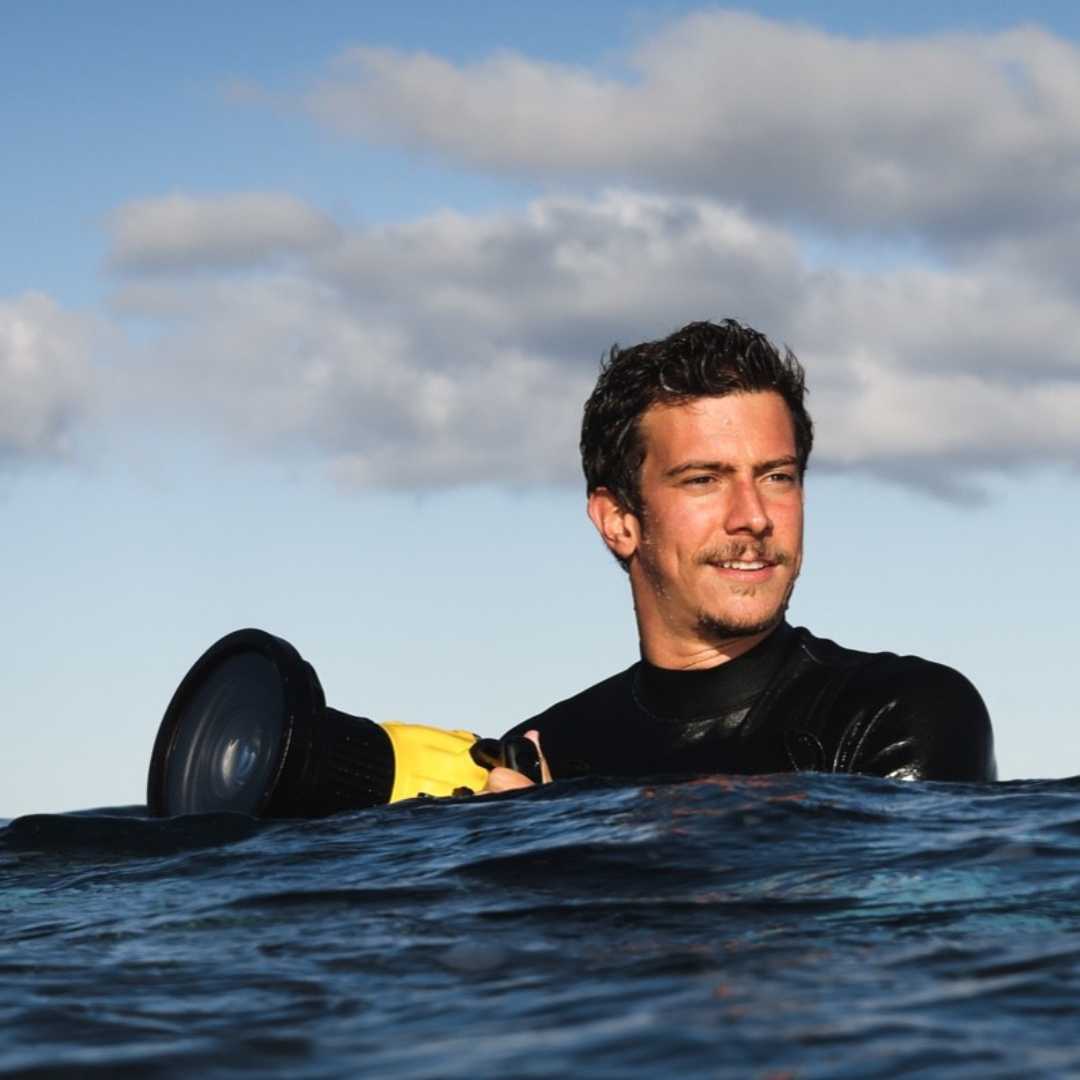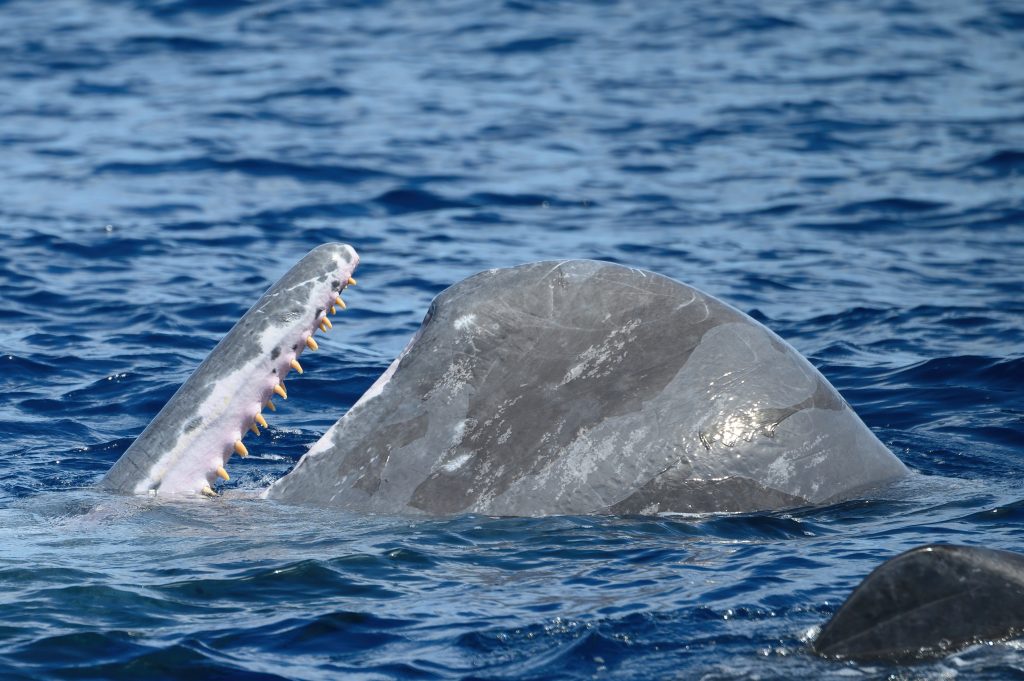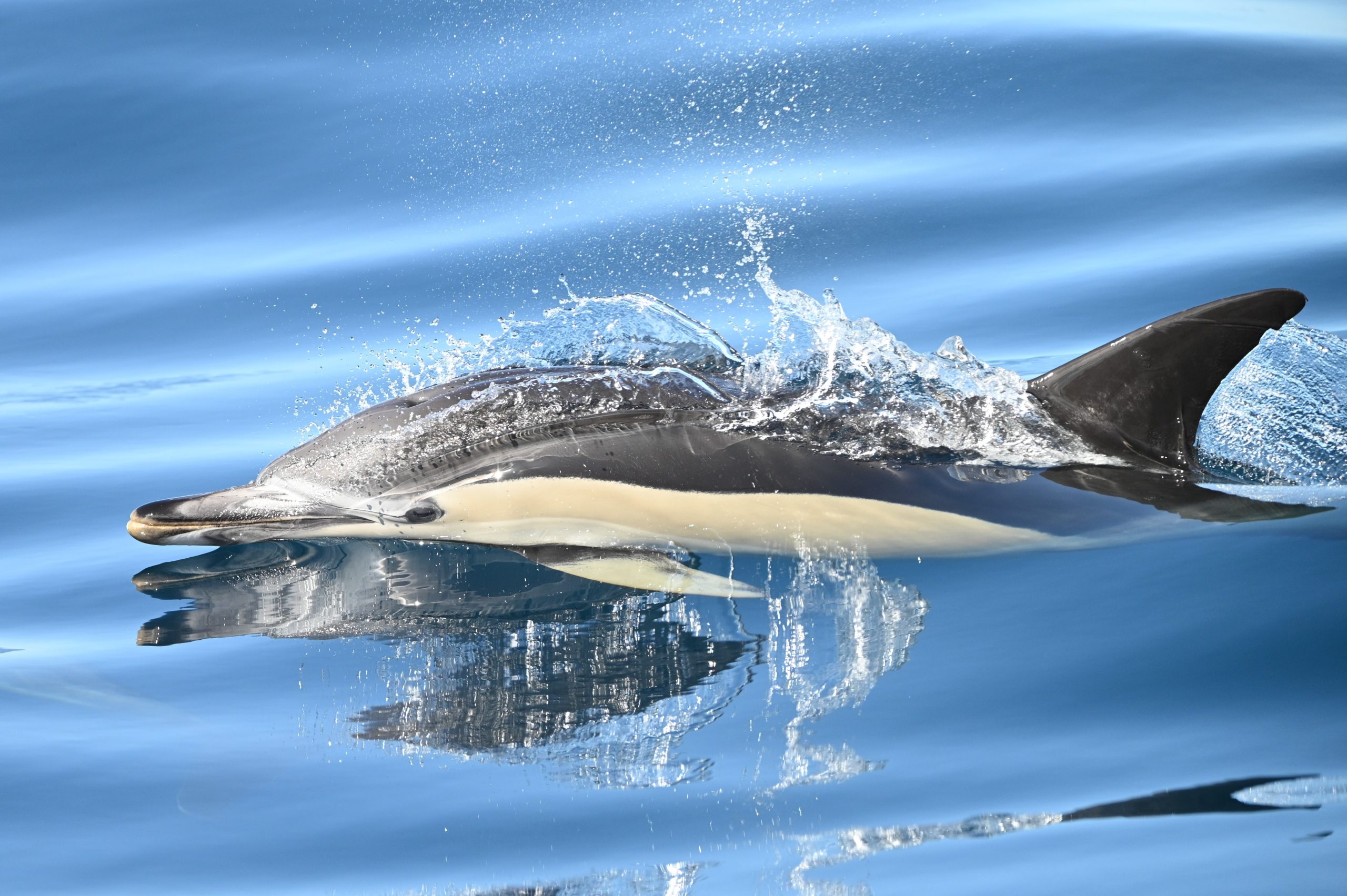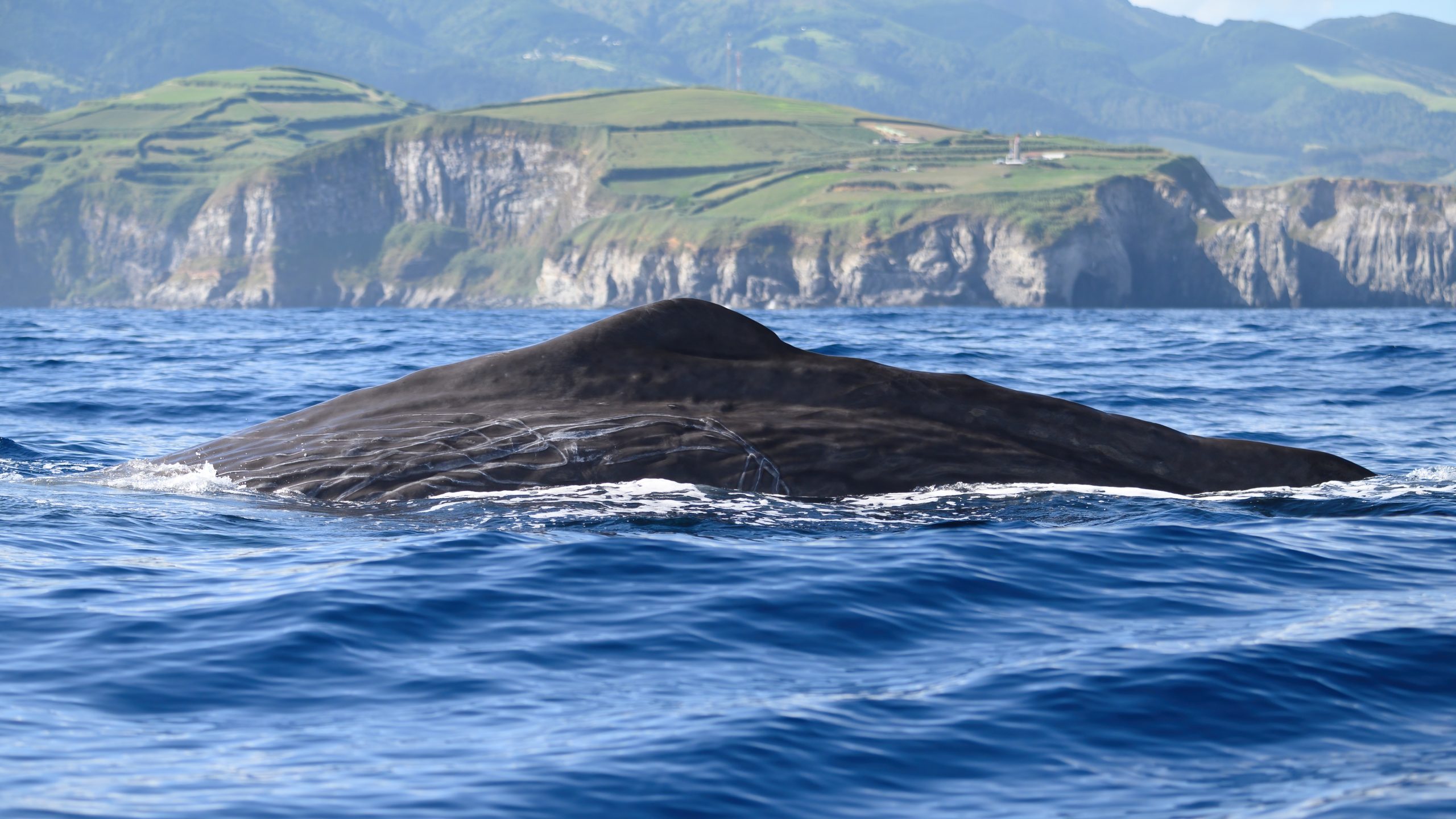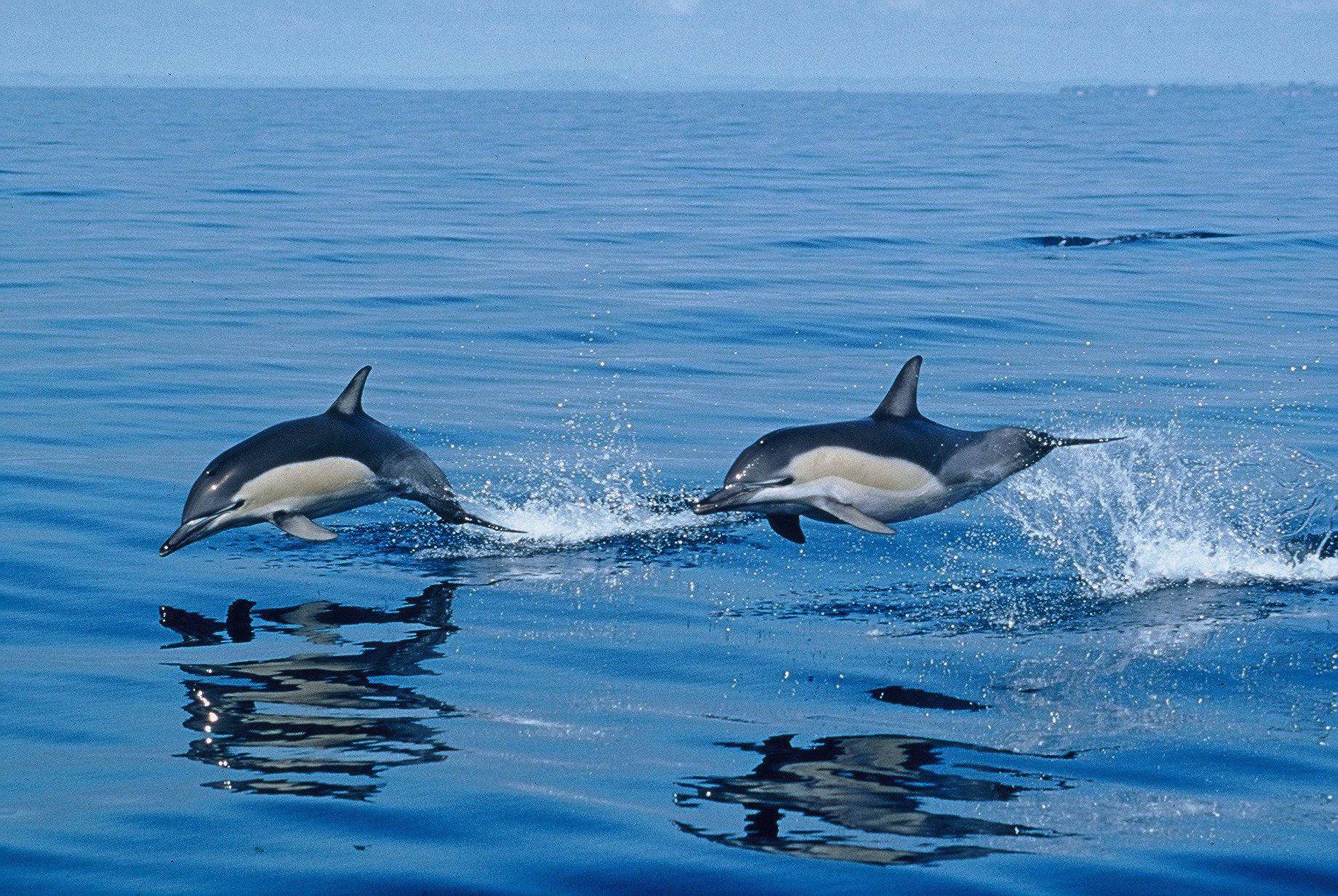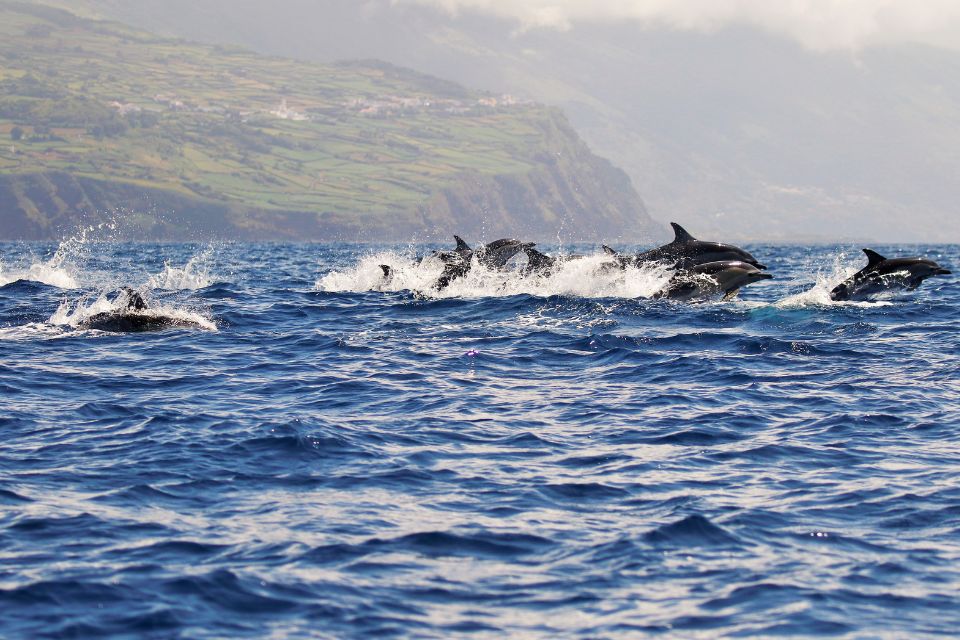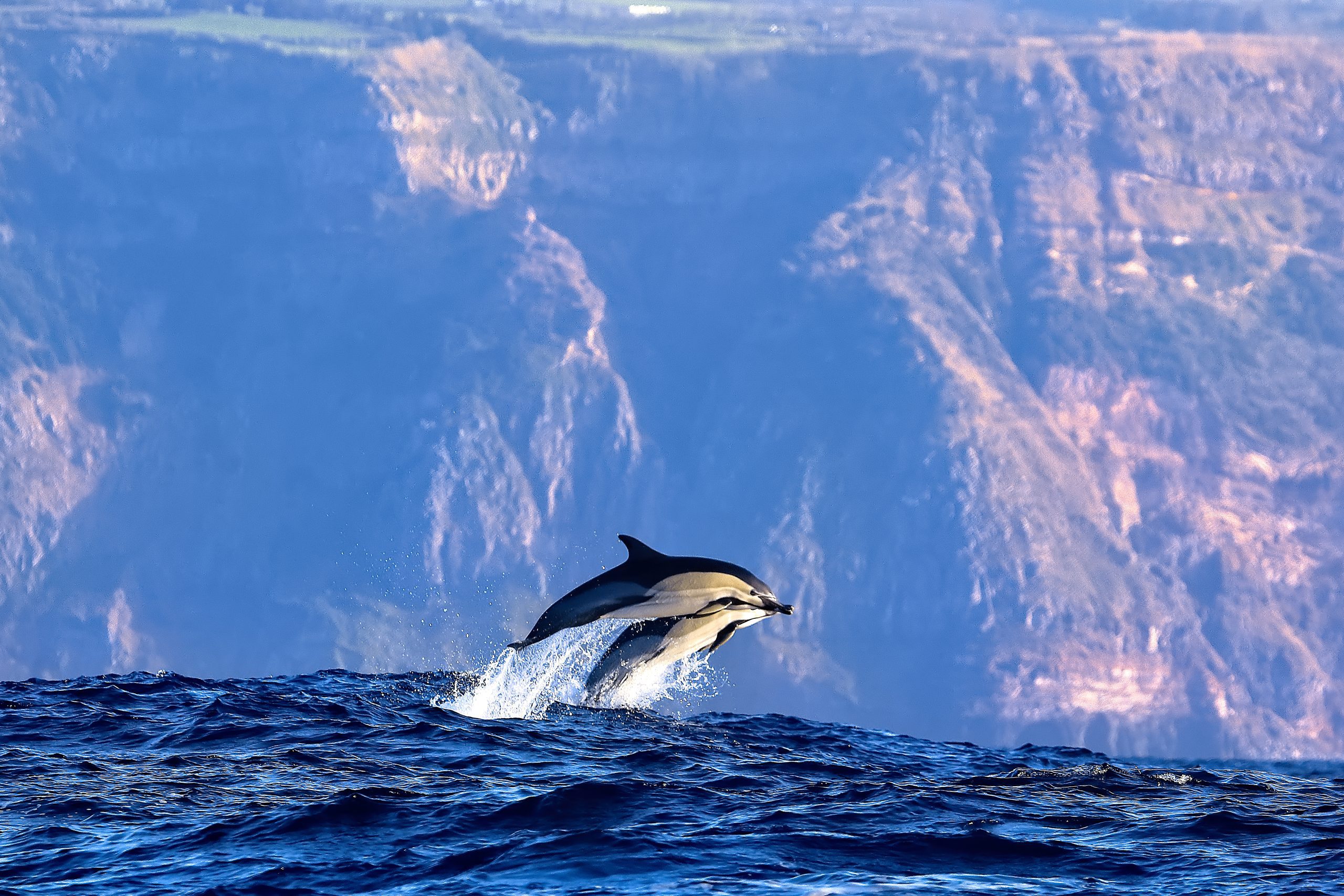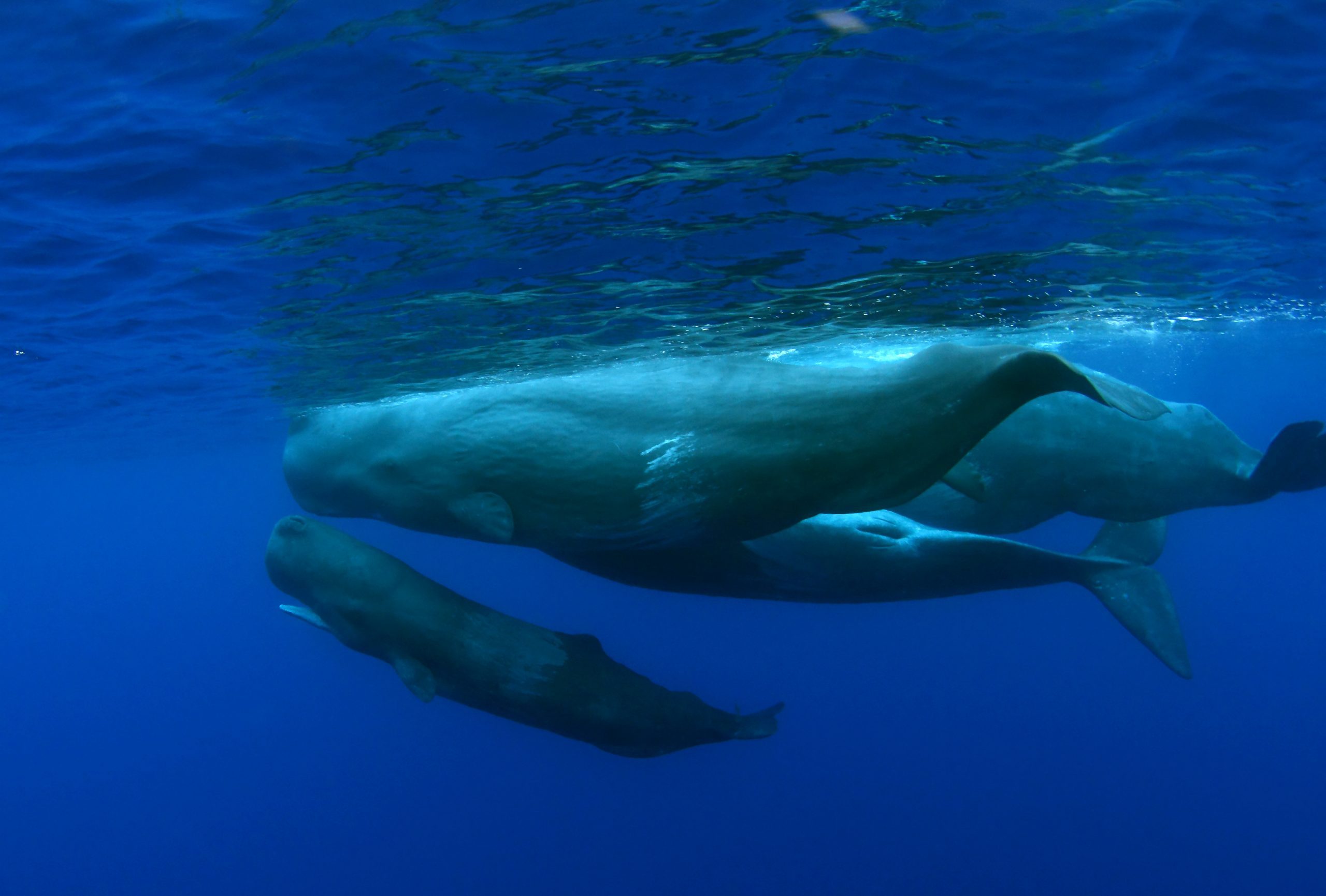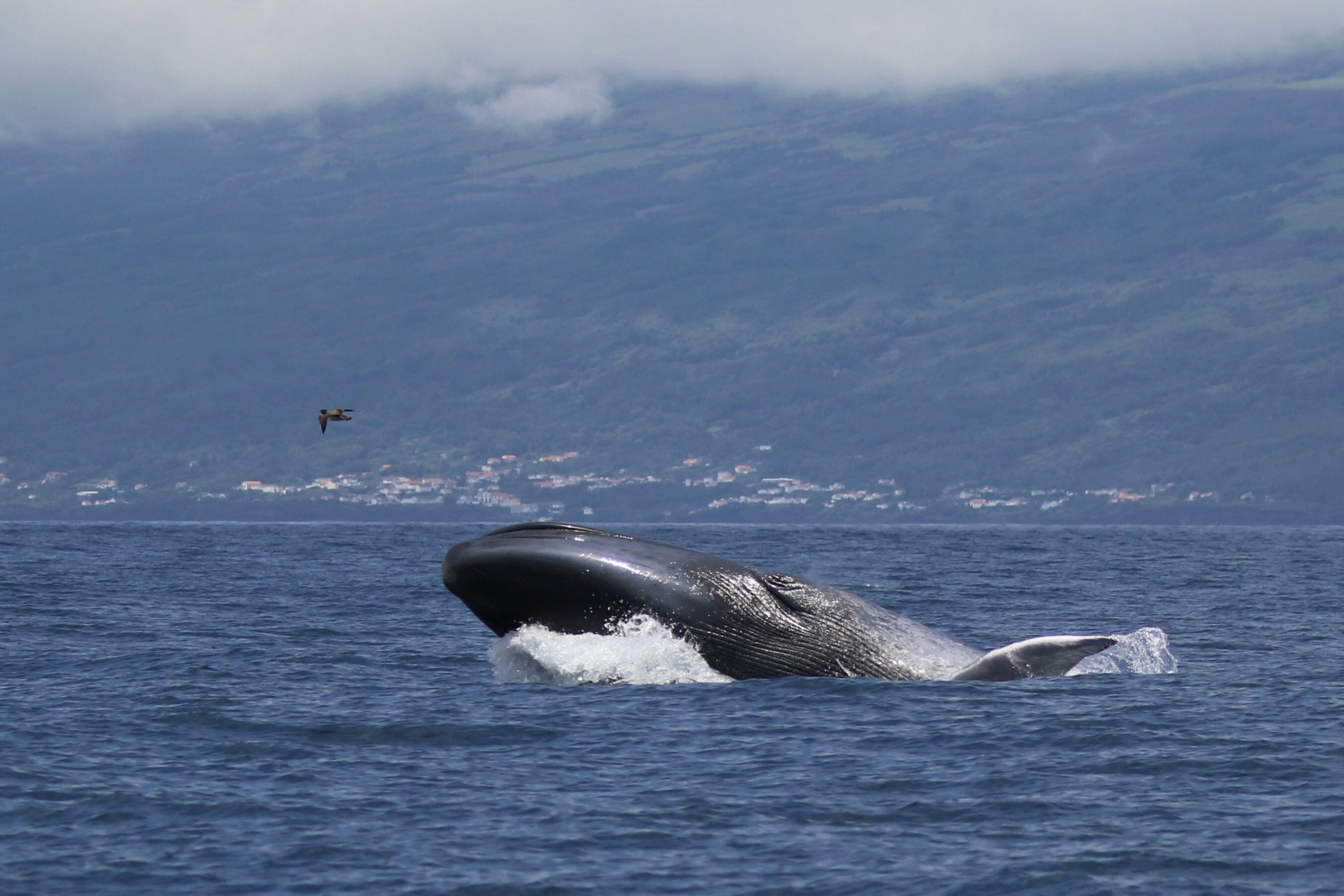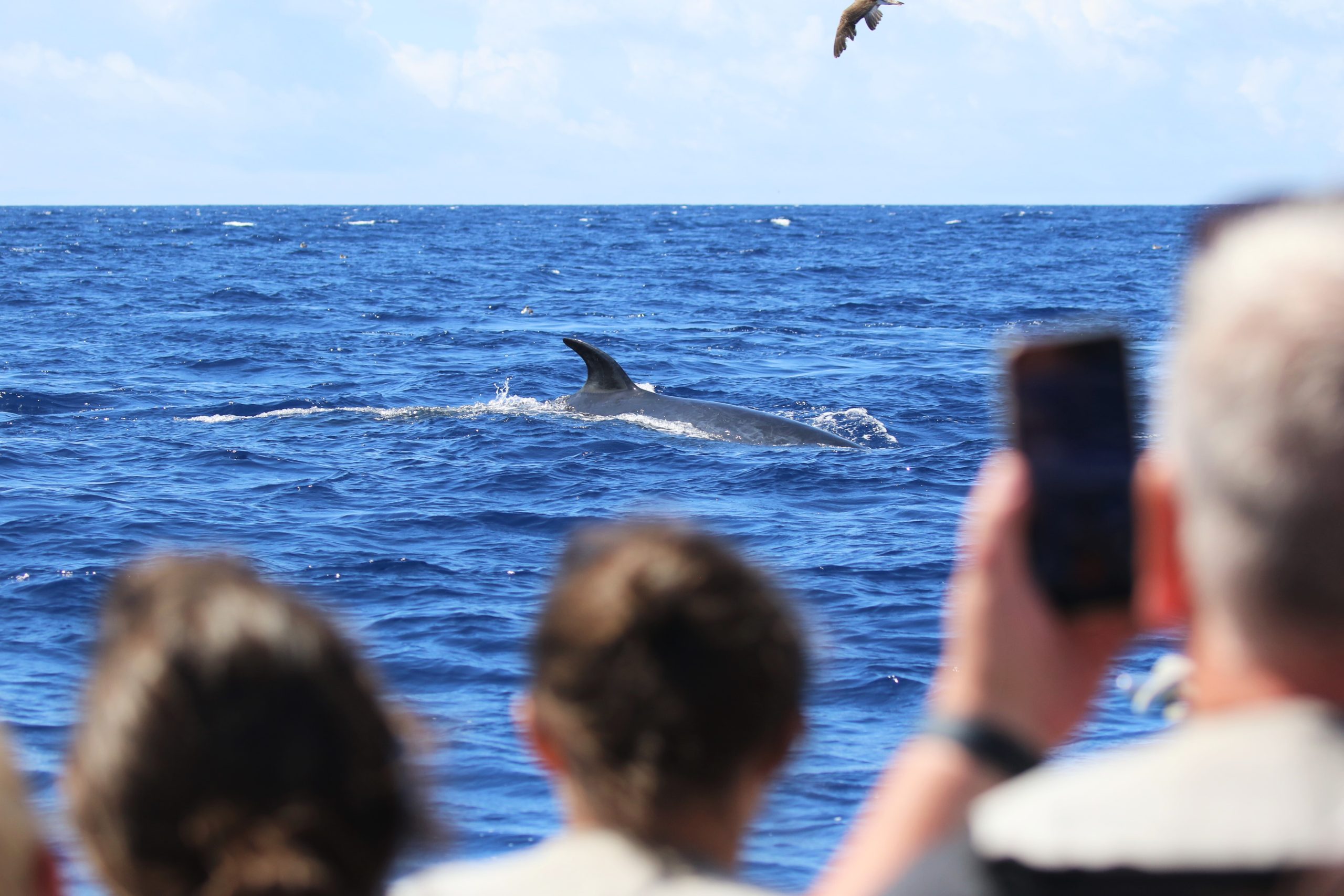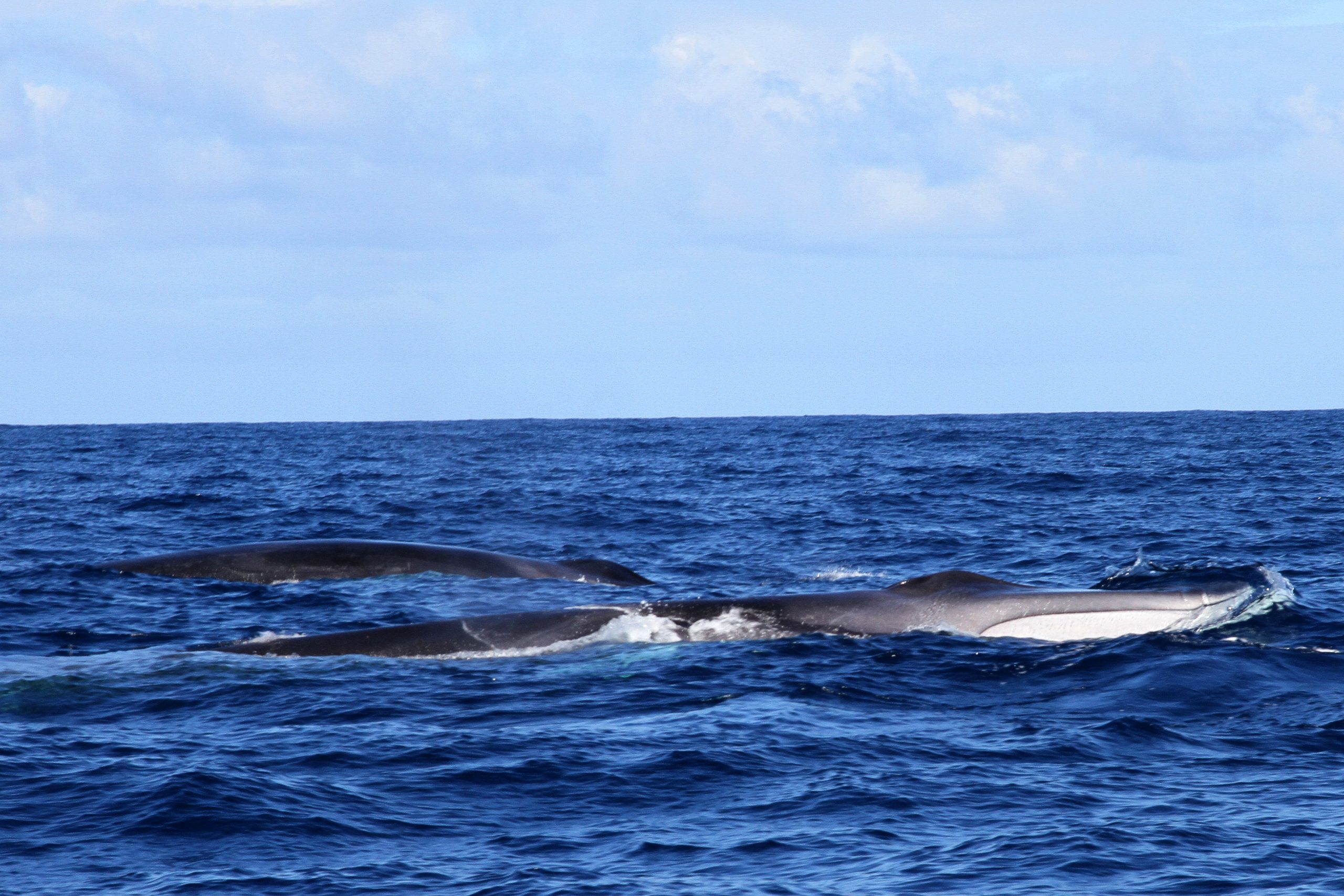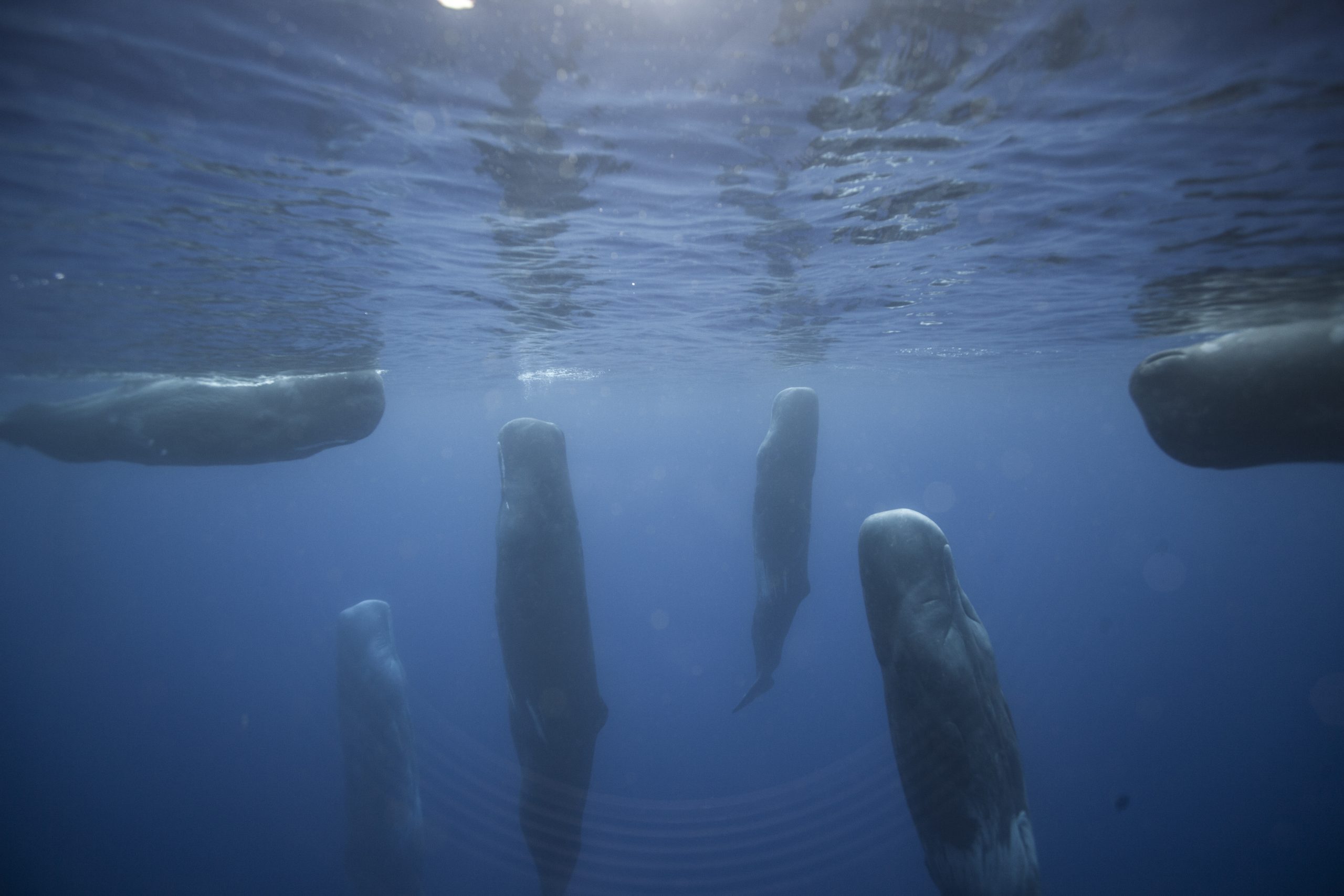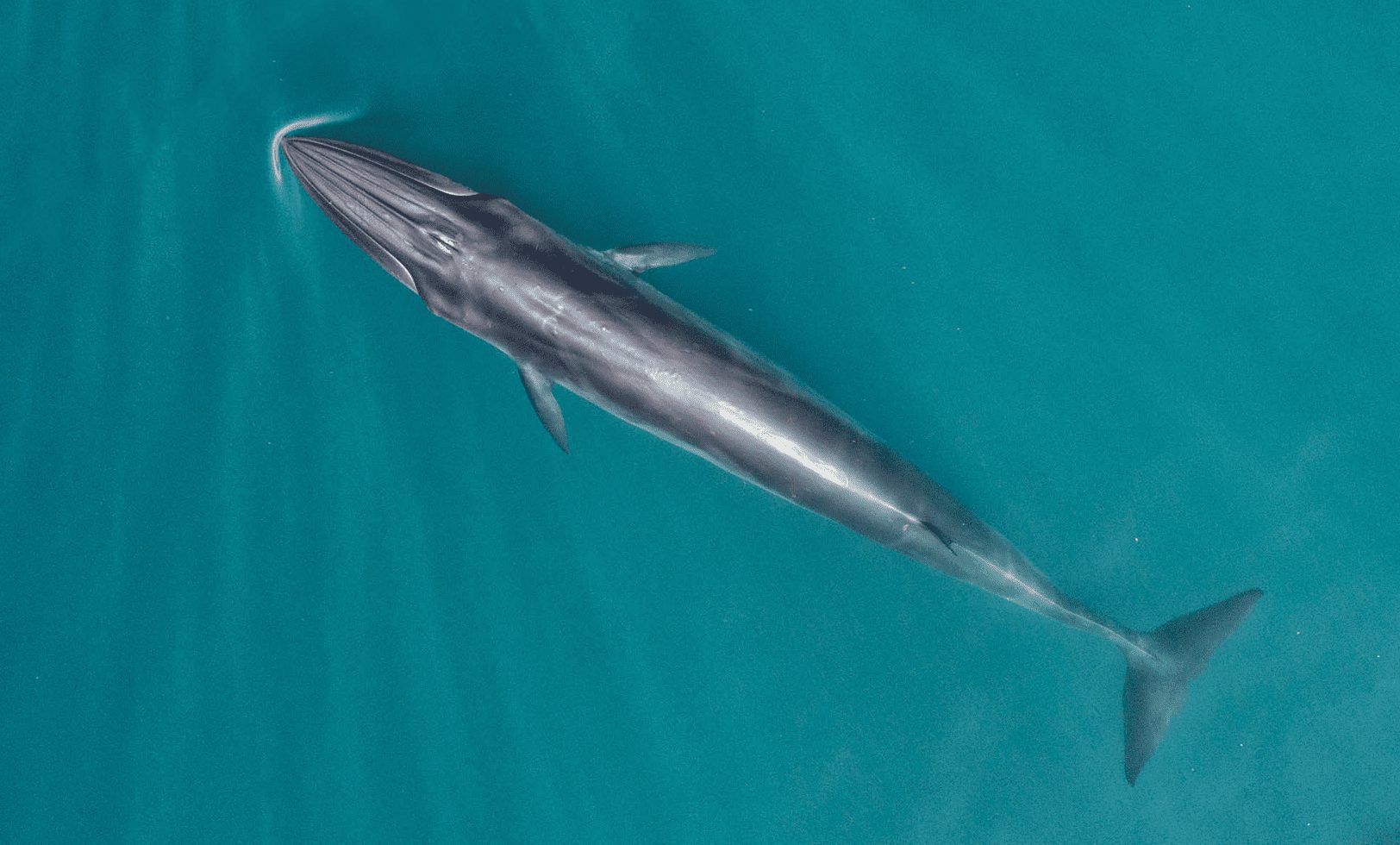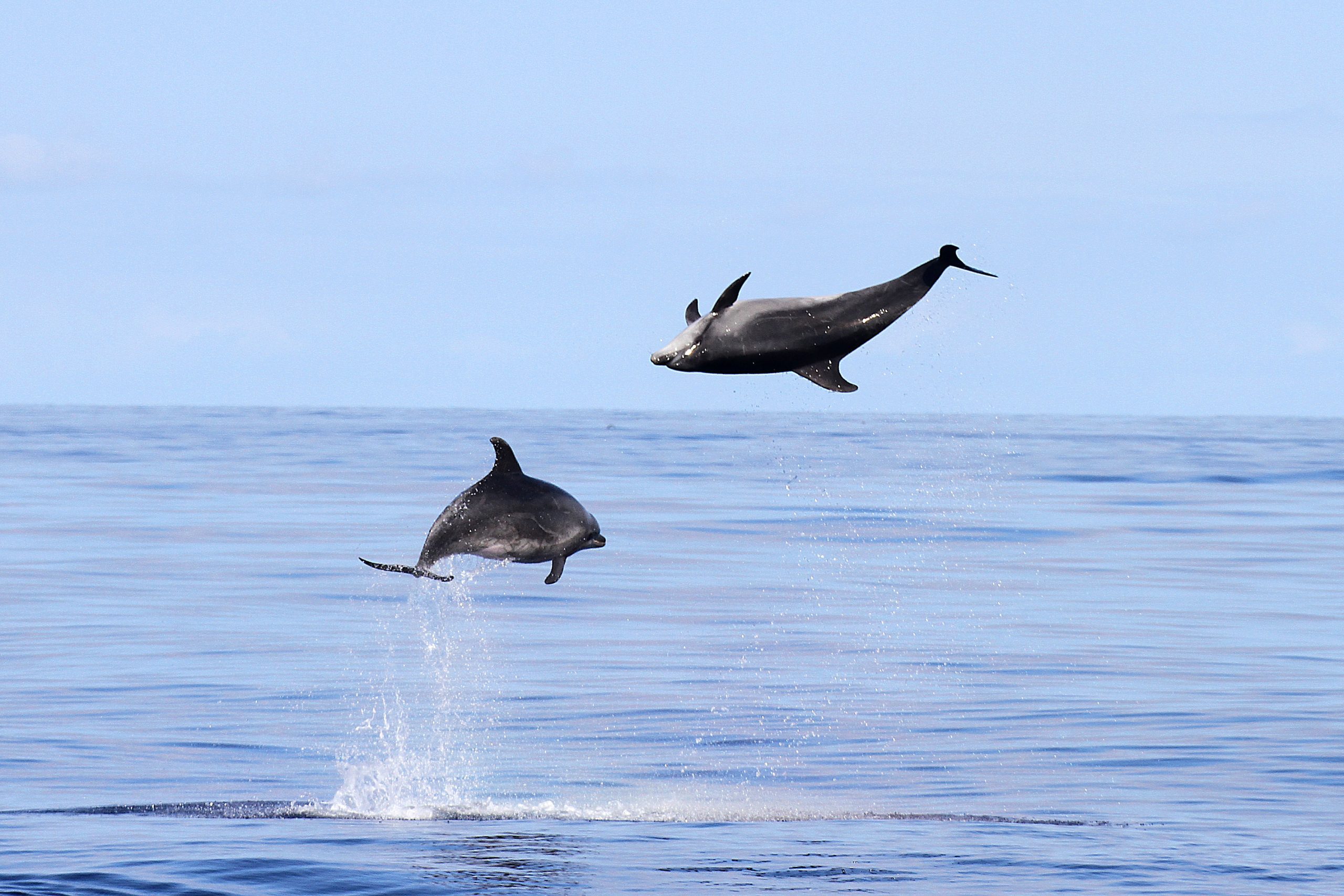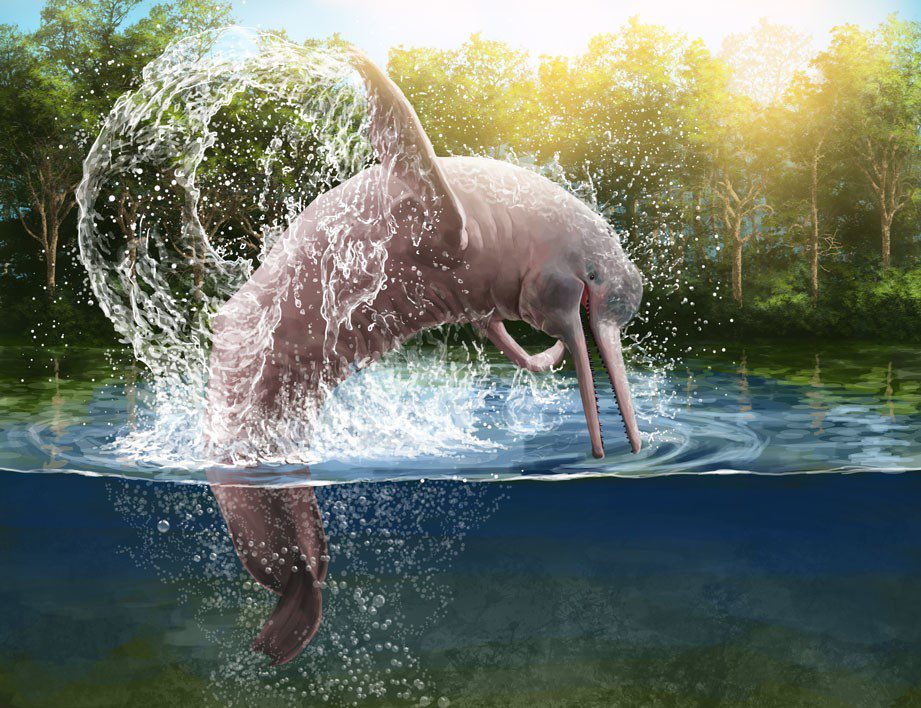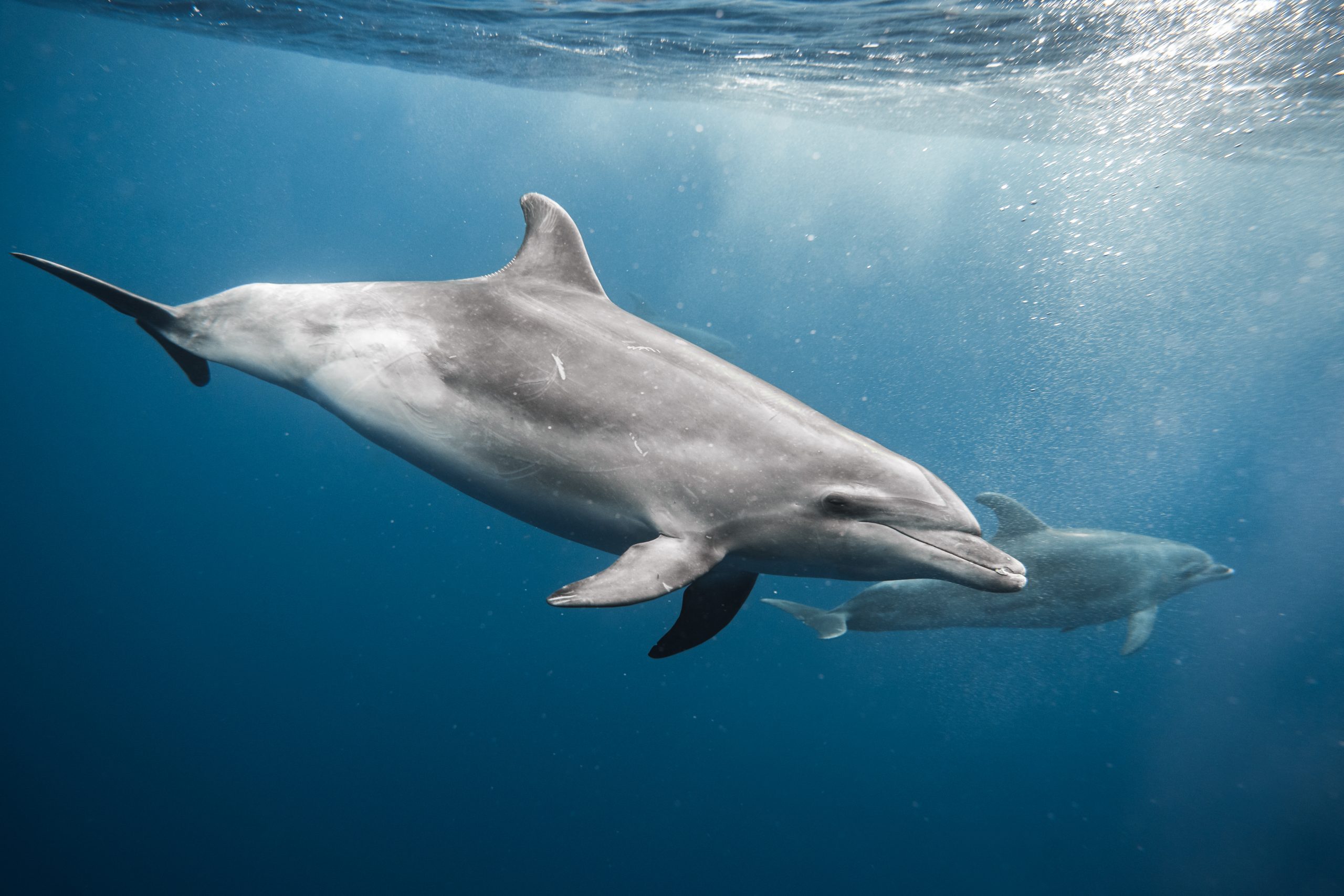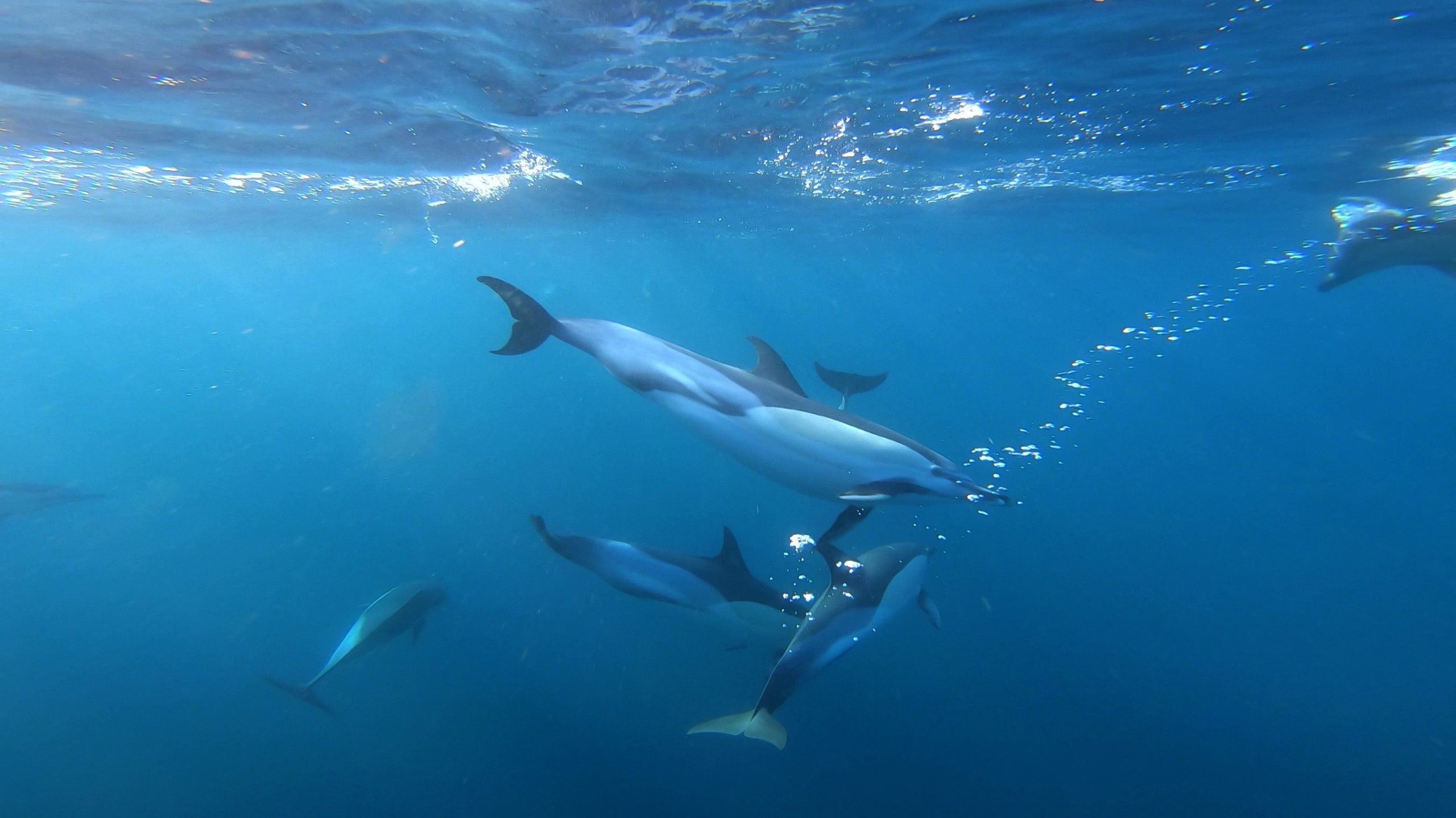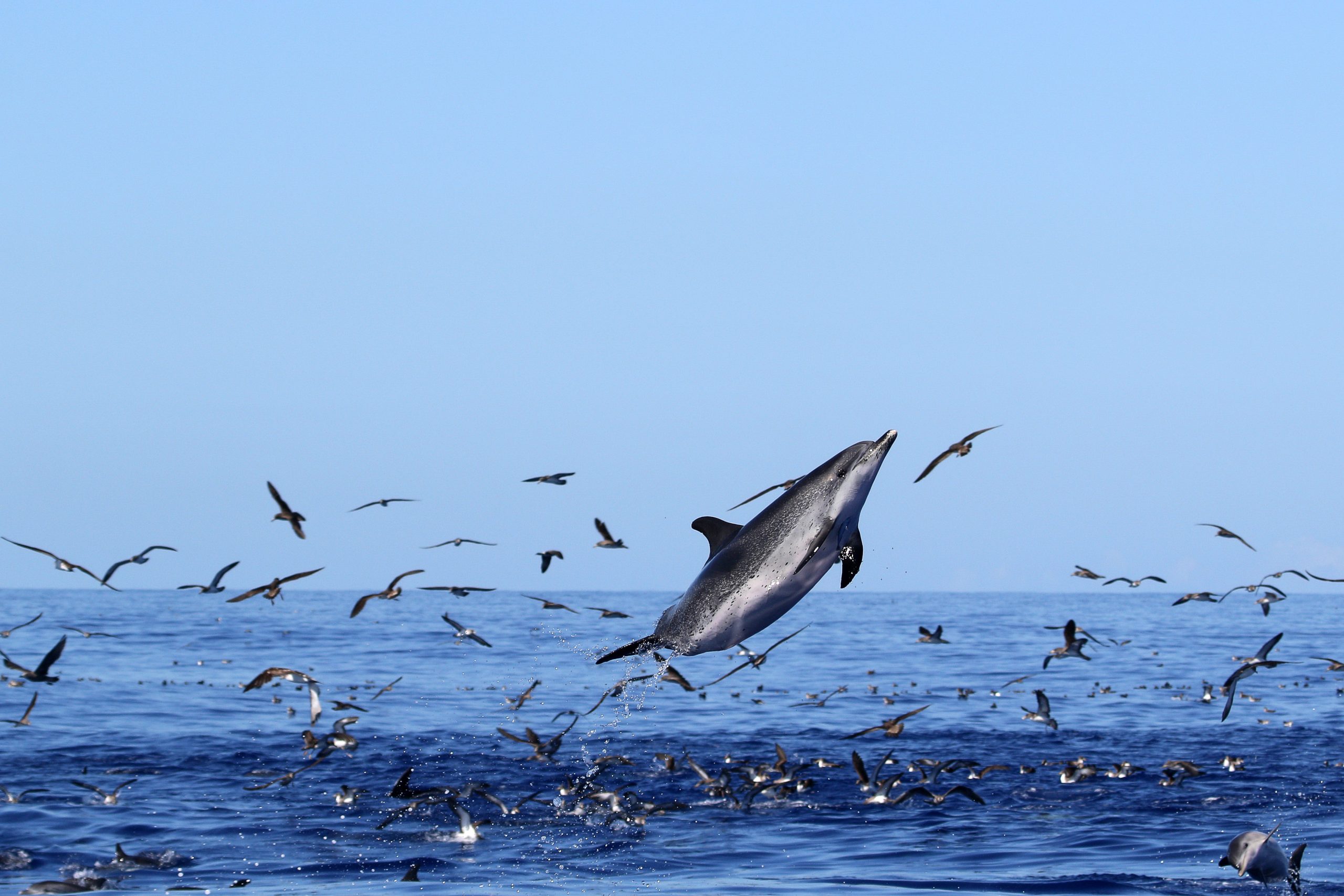Nowadays, many people are looking for milk substitutes for a healthy and enjoyable lifestyle. You might be here for this reason, or just because you are curious about whales. Anyway, we are going to answer what whale milk tastes like right away!
Nursing in Whales
Anatomy
If you have ever had the opportunity to see a whale from all sides, you have probably recognized that the human breast looks different from a whale’s breast. Both whales and humans possess two mammary glands; however, while humans have them outside the body, whales and dolphins do not have any attachment. Their glands are located inside skin grooves, called mammary slits. So, how can whale calves get their milk if the nipples are hidden well inside these special skin folds?
Feeding process

Whale calves have a unique way of breastfeeding. They introduce their tongues into the mammary slits and wrap them around the female’s bosom, channeling the released milk directly into their mouths. Due to this stimulation cue, the mammary glands are prevented from retracting and only start ejecting milk when the baby can catch it directly.
Looking at this complex process, it is easy to understand why we do not use whale milk as a common source of milk. We cannot easily find the mammary glands, and it would be almost impossible to stimulate them properly to retrieve milk. Furthermore, it would also be challenging to find these elusive animals to milk them, and of course, we do not support whales kept in captivity! So, all in all, getting milk from whales is difficult and not cost-effective for mass production.
Importance of the Calf

Besides these obvious reasons, there are some more hidden ones for humans not to drink whale milk. Indeed, whales need to produce a considerable amount of milk. However, it is extremely rich in nutrients and fats. For humans, it would probably be tough to accept this milk, but for whale calves, this high concentration of fat is significant! As milk is the sole food source of a whale calf, it can feed on up to 400 liters of milk per day and thus, gain about 90 kg of weight per day.
Most toothed whale calves get weaned at the age of 1–3 years. They are called income breeders. There are usually no migratory phases, and the whales also feed during the nursing period, which provides them with the energy needed for milk production. However, there are quite a few species that only nurse for shorter periods, such as the harbor porpoise, which nurses for only 8 months.
In contrast, baleen whales commonly stop nursing after 6–7 months. They are referred to as capital breeders. Here, the lactation and the feasting period commonly occur at the same time. This means that they eat notably less during their calving period in winter and take advantage of a strong blubber layer (fatty tissue) to get the energy for milk production. Blue whales, for example, lose 20% of their whole body protein during the first 19 days of lactation! Calves have to grow fast and evolve thick blubber layers as they migrate together to polar-feeding places in the springtime.
Whale Milk
Consistency and Color

As mentioned before, whale milk contains significantly more fat than cow or human milk. Therefore, it has a thicker consistency, similar to cream cheese or soft butter. Depending on the whale species, the fat content ranges between 35% and 50%, while cow milk only contains about 4%. Baleen whales usually have higher fat levels due to earlier weaning and faster calf development. This high-fat content provides roughly 443 kcal per 100 grams of whale milk — in other words, it’s far from being a light diet!
Nevertheless, whale milk fat content likely varies depending on the lactation stage, as in other mammals. However, confirming this is difficult because researchers can only estimate whale calves’ ages. Japanese studies from the early 1920s suggest that mothers of newborn calves produce milk with lower fat content. Older calves, on the other hand, receive richer, fattier milk as they grow.
The color of whale milk can vary significantly, but it typically appears in shades of cream, ivory, light green, and yellowish tones. The nutrition of the animals may most likely cause these special colors. A few times, scientists have found a reddish hue, but they proposed that this was due to blood contamination while examining the mammary glands. Likewise, it is striking that, at least in some whale species, there is no lactose present in the milk.
Taste
In terms of consistency, whale milk would make the perfect base for ice cream! However, even after processing it into gelato, the milk would retain a salty-fishy sea flavor. Studies have figured out that whale milk, in general, has a slightly fishy taste. The milk of blue whales combines this taste with the flavor of castor oil, milk of magnesia, and a bit of liver. The exact taste depends on the species and the proteins, fats, and fatty acids contained in the milk. Therefore, most likely humans would not enjoy whale milk in their muesli, ice cream, or anywhere else!
Conclusion
To put it in a nutshell, the harvest and processing of whale milk is not feasible for human needs. If we consider the taste, this milk could be helpful in other contexts, but if you are dieting, whale milk is nothing for you! A half-cup serving of whale ice cream would contain about 900 kcal!
Nevertheless, I would prefer to leave the whale milk where it belongs — to the whales and their babies — so that we will be able to watch these fascinating creatures for a long time still!
FAQs
Whale calves feed by inserting their tongues into mammary slits to stimulate milk ejection. This method prevents the mammary glands from retracting and ensures direct milk flow into the calf’s mouth.
Whale milk is exceptionally rich in nutrients and fats, essential for rapid calf growth. It has a thick consistency similar to cream cheese and contains about 443 kcal per 100 grams, which is much higher than the 4% fat content of cow’s milk.
Whale milk has a slightly fishy taste due to its marine diet, with variations depending on the species. Despite its creamy texture, the taste profile includes hints of fish oils and liver, making it unsuitable for human palates.
Bibliography
General Studies and Lactation Physiology in Marine Mammals
- Peters, N. (1938). Die biologischen Grundlagen des antarktischen Walfanges. Fette und Seifen, 45(1), 19–28.
- Büker, M. (2009). Literaturübersicht zur Ernährung, Verdauungsanatomie und -physiologie von Meeressäugern. University of Zurich.
- Oftedal, O. T. (1993). The adaptation of milk secretion to the constraints of fasting in bears, seals, and baleen whales. Journal of Dairy Science, 76(10), 3234–3246.
- Oftedal, O. T. (1997). Lactation in whales and dolphins: evidence of divergence between baleen- and toothed-species. Journal of Mammary Gland Biology and Neoplasia, 2, 205–230.
- Houston, A. I., Stephens, P. A., Boyd, I. L., Harding, K. C., & McNamara, J. M. (2007). Capital or income breeding? A theoretical model of female reproductive strategies. Behavioral Ecology, 18(1), 241–250.
Milk Composition and Nutrition in Whales (Balaenoptera, Balaena, etc.)
- Cama, J. S., & Meara, M. L. (1953). The component acids of milk fats of Balaenoptera physalus (fin whale). Biochemical Journal, 55(2), 365.
- Ohta, K., Watarai, T., Oishi, T., Ueshiba, Y., Hirose, S., Yoshizawa, T., & Okano, H. (1953). Composition of fin whale milk. Proceedings of the Japan Academy, 29(7), 392–398.
- Gregory, M. E., Kon, S. K., Rowland, S. J., & Thompson, S. Y. (1955). The composition of the milk of the blue whale. Journal of Dairy Research, 22(1), 108–112.
- Harms, C. A. (1993). Composition of prepartum mammary secretions of two bowhead whales (Balaena mysticetus L.). Journal of Wildlife Diseases, 29(1), 94–97.
- Urashima, T., Sato, H., Munakata, J., Nakamura, T., Arai, I., Saito, T., … & Lydersen, C. (2002). Chemical characterization of the oligosaccharides in beluga (Delphinapterus leucas) and minke whale (Balaenoptera acutorostrata) milk. Comparative Biochemistry and Physiology Part B: Biochemistry and Molecular Biology, 132(3), 611–624.
- Urashima, T., Kobayashi, M., Asakuma, S., Uemura, Y., Arai, I., Fukuda, K., & Fukui, Y. (2007). Chemical characterization of the oligosaccharides in Bryde’s whale (Balaenoptera edeni) and sei whale (Balaenoptera borealis lesson) milk. Comparative Biochemistry and Physiology Part B: Biochemistry and Molecular Biology, 146(2), 153–159.
Milk and Lactation in Dolphins and Small Cetaceans
- Eichelberger, L., Fetcher Jr, E. S., Geiling, E. M. K., & Vos Jr, B. J. (1940). The composition of dolphin milk. Journal of Biological Chemistry, 134(1), 171–176.
- Pilson, M. E., & Waller, D. W. (1970). Composition of milk from spotted and spinner porpoises. Journal of Mammalogy, 51(1), 74–79.
- Jenness, R., & Odell, D. K. (1978). Composition of milk of the pygmy sperm whale (Kogia breviceps). Comparative Biochemistry and Physiology Part A: Physiology, 61(3), 383–386.
- Peddemors, V. M., De Muelenaere, H. J. H., & Devchand, K. (1989). Comparative milk composition of the bottlenosed dolphin (Tursiops truncatus), humpback dolphin (Sousa plumbea), and common dolphin (Delphinus delphis) from southern African waters. Comparative Biochemistry and Physiology Part A: Physiology, 94(4), 639–641.
- Ullrey, D. E., Schwartz, C. C., Whetter, P. A., Euber, J. R., Cheng, S. G., & Brunner, J. R. (1984). Blue-green color and composition of Stejneger’s beaked whale (Mesoplodon stejnegeri) milk. Comparative Biochemistry and Physiology Part B: Comparative Biochemistry, 79(3), 349–352.
Comparative Lactation and Milk Studies in Other Marine Mammals
- Lavigne, D. M., Stewart, R. E. A., & Fletcher, F. (1982). Changes in composition and energy content of harp seal milk during lactation. Physiological Zoology, 55(1), 1–9.
- Mellish, J. A. E., Iverson, S. J., & Bowen, W. D. (1999). Variation in milk production and lactation performance in grey seals and consequences for pup growth and weaning characteristics. Physiological and Biochemical Zoology, 72(6), 677–690.
Complementary and Multimedia Sources
- Siebert, U. (2021). Kann man Wale melken? [Podcast episode]. BR Mediathek. Retrieved from https://www.br.de/mediathek/podcast/lachlabor/kann-man-wale-melken/1837900



